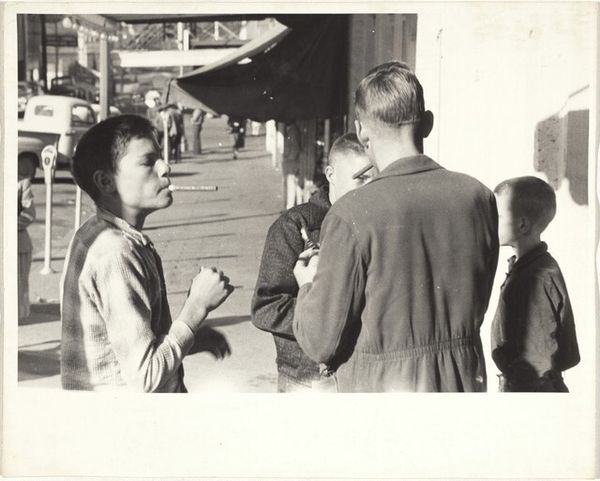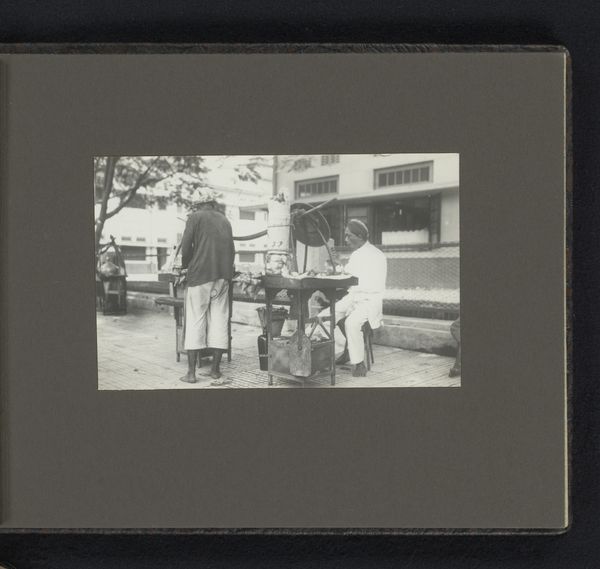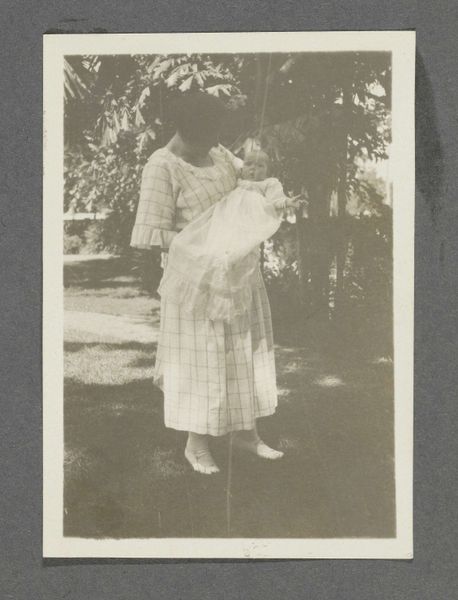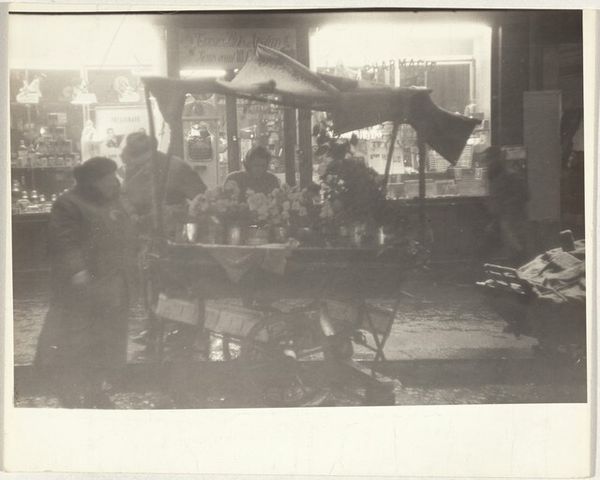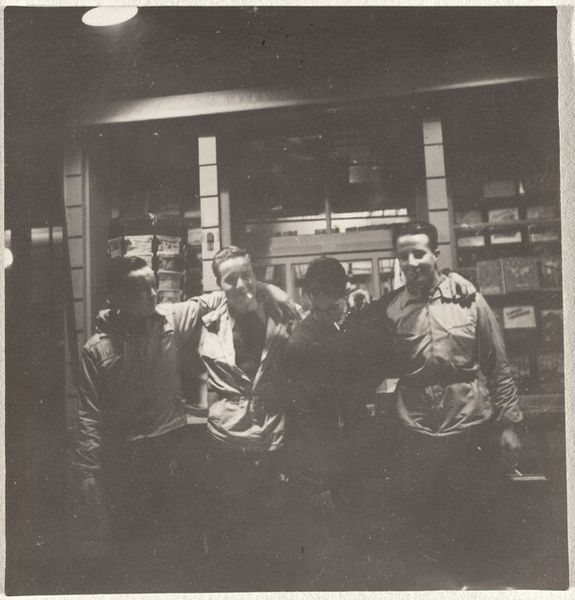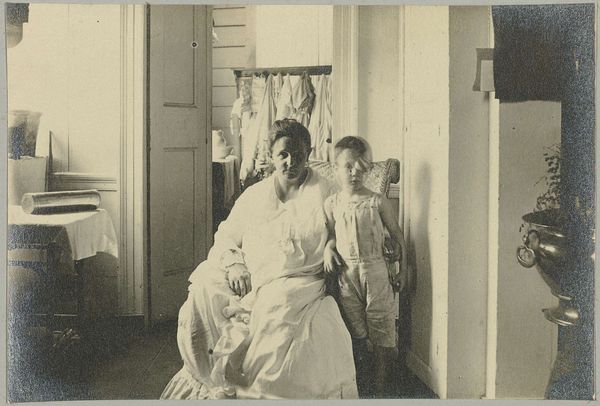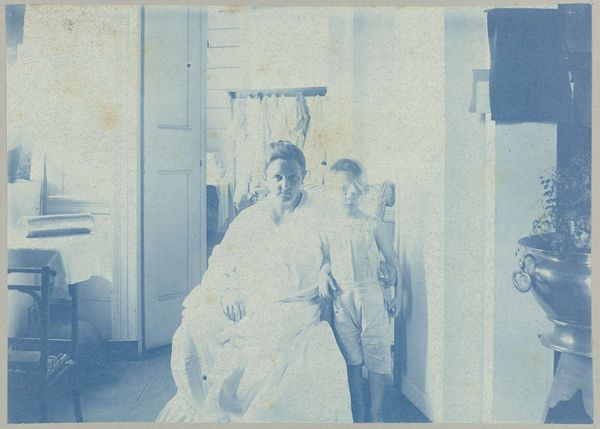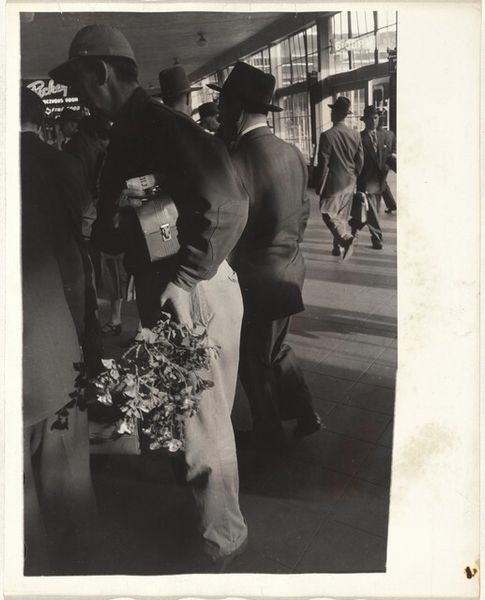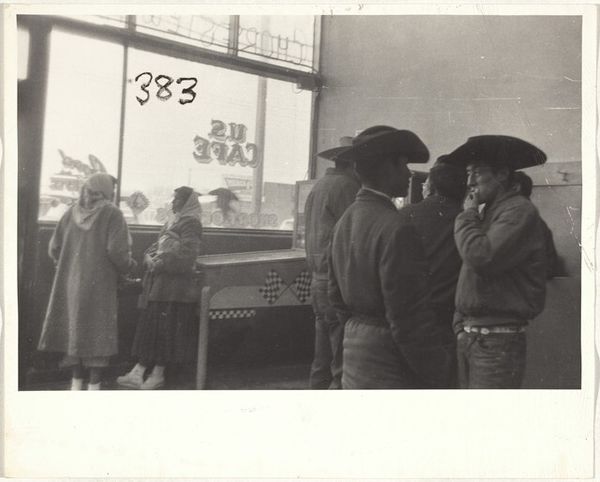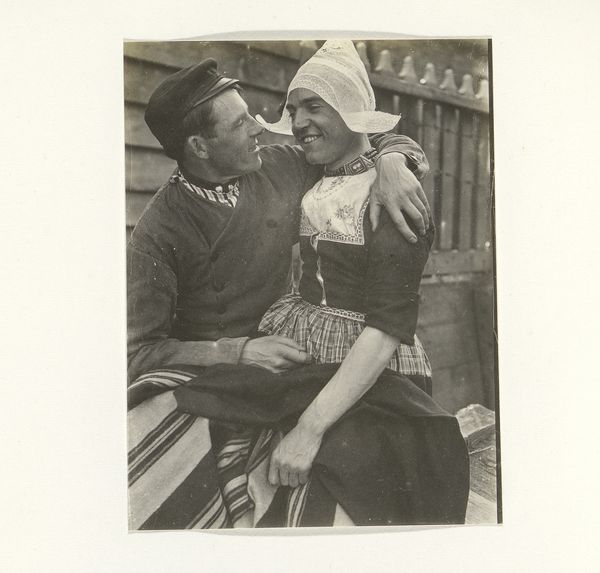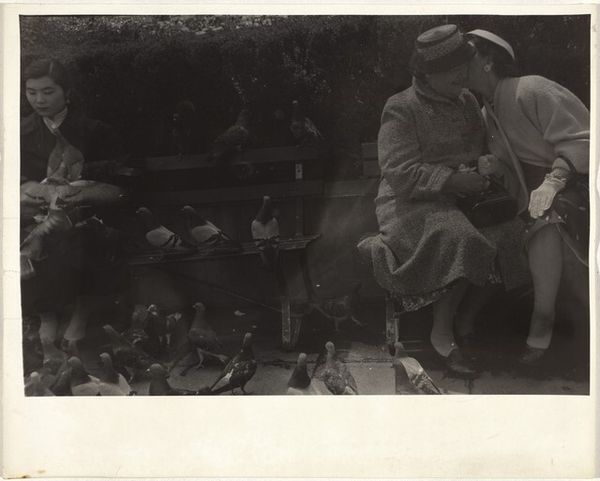
Mother and two children at store counter--Port Gibson, Mississippi 1955
0:00
0:00
print, photography, gelatin-silver-print
#
portrait
# print
#
wedding photography
#
social-realism
#
photography
#
historical photography
#
gelatin-silver-print
#
genre-painting
Dimensions: sheet: 20.4 x 25.3 cm (8 1/16 x 9 15/16 in.)
Copyright: National Gallery of Art: CC0 1.0
Curator: What a poignant scene. We are looking at "Mother and two children at store counter—Port Gibson, Mississippi", a gelatin silver print taken by Robert Frank in 1955. You know, I see so much unspoken in those grainy details. What's your initial impression? Editor: Austere. The tonality is overwhelmingly grey. There are very few variations in tone. It certainly draws my attention to the composition. It is arranged to show the social order. A mother stands at the counter while two children are placed lower in the frame. The shelves of goods act as a high, somewhat overwhelming background. Curator: I'm so glad you picked up on that. Frank wasn't just snapping pictures; he was offering commentary, don’t you think? It makes you wonder about their lives, what they were buying. What burdens the mother has as the baby stares into the camera, their position seems fixed. It is the arrangement for them at this point in their life. And yes the shelves are packed in such contrast to their faces. Editor: Yes. It feels raw, doesn’t it? The graininess lends to a sense of immediacy and unvarnished reality that challenges conventional portraiture. Note how Frank employs a shallow depth of field, directing the viewer’s focus towards the mother and child. What's going on for the other characters is less emphasized. We are directed only to certain details. I almost wish for it to have more light on the bottom of the piece though. Curator: Right, like a whisper instead of a shout. This work belongs to his series "The Americans," a project that changed photography forever. He took these seemingly simple photos, which become so charged with a certain… quiet energy. Editor: I’m drawn to the idea of its place in The Americans project, and the semiotics of everyday life are presented. The limited light in that general store becomes symbolic, suggesting limitations or perhaps just the simple grit of existence at the time. Curator: It’s almost as if we can feel the humidity and the weight of the moment through Frank's lens. He isn't glorifying, is he? But there is such empathy. The woman becomes so stately. He makes every moment monumental through photography. The ordinary made so poignant. Editor: Indeed. I find the dialogue he establishes, primarily through form, powerfully understated. An artwork like this demands that we acknowledge the complexity inherent in the seemingly simple moments. Curator: Agreed. It is that layering that always resonates, like the visual echoes of an era we keep needing to revisit, understand. Editor: Absolutely, and understanding requires feeling the texture of the memory that pieces like this so masterfully preserve.
Comments
No comments
Be the first to comment and join the conversation on the ultimate creative platform.
